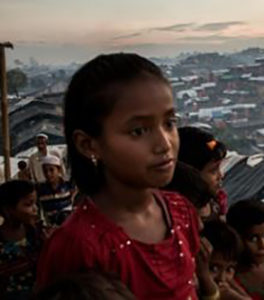Australia’s role in the global refugee crisis
The Labor Party committed to increasing Australia’s refugee intake to 32,000 at its recent national conference. 
If Labor forms government next year this will mean Australia’s current intake of 1,750 will rise dramatically.
And with Labor also committing to contribute $100 million a year the UN’s refugee agency UNHCR, it’s worth looking at what these numbers mean in a global context and where refugee are coming from:
Syria
Since the breakout of war in Syria in 2011, as many as 6.3 million Syrians have fled the violence to seek refuge in nearby countries, with Turkey accepting 3.3 million, or more than half of them, according to the UNHCR. Lebanon, Syria’s neighbor to the west, has taken more than 1 million Syrians. Other Arab countries, including Jordan (655,000), Iraq (246,000), and Egypt (126,000), have also hosted Syrians.
Few Syrians – about 8 per cent – live in refugee camps, with most living in urban areas in their host countries, according to the UNHCR.
Afghanistan
The second-largest refugee population in the world comes from Afghanistan, which has about 2.6 million registered refugees, according to the UNHCR. The U.N. refugee agency says that Afghans account for Asia’s largest population of long-term refugees, a situation defined as 25,000 or more refugees from the same country being in exile for five or more years in an asylum country.
The UNHCR says that 1.4 million Afghan refugees live in neighboring Pakistan, where 74 percent are second or third generation refugees.
South Sudan
About 2.4 million worldwide come from South Sudan, which became the world’s newest country after splitting from the Republic of Sudan to the north and establishing statehood in 2011. Only a couple of years after gaining independence, South Sudan fell into civil war, which claimed 400,000 lives and displaced 4.5 million people.
Uganda hosts the largest number of South Sudanese refugees at 785,104, followed by Sudan (764,400), Ethiopia (422,240), Kenya (114,391), and the Democratic Republic of the Congo (95,181).
Somalia
The UNHCR reports there are 805,978 refugees from Somalia, the Horn of Africa country that has suffered from drought and years of fighting. Most Somali refugees are living in Ethiopia, Yemen, and Kenya, each of which hosts more than 250,000.
As of January, Kenya’s Dadaab refugee camp, considered one of largest in the world, alone had a population of 235,269 registered refugees and asylum seekers, according to the UNHCR. The camp was opened in 1991 during Somalia’s civil war. In 2011, 130,000 refugees escaping drought and famine in Somalia arrived, according to the UNHCR.
Myanmar
More than 800,000 people from Myanmar have sought refuge in neighboring Bangladesh since violence broke out against the Muslim minority in 2017, according to the UNHCR. The UN Office for the Coordination of Humanitarian Affairs says that whole villages were burned and women and girls were raped.
Seventy five per cent of the Rohingya arrived in Bangladesh in September 2017, a month after their communities were targeted, the UNHCR says. Cox’s Bazar, where many of the Rohingya arrived in Bangladesh, is home to the densest concentration of refugees in the world.
Venezuela
In early November, the UNHCR reported that the number of Venezuelan refugee and migrants worldwide reached three million. Latin American and Caribbean countries host about 2.4 million Venezuelans, or the bulk of the refugees and migrants, according to the UNHCR. Neighboring Colombia, which shares a 1,400-mile border with Venezuela, alone hosts more than a million.
Venezuelans are fleeing their country to escape widespread food and medicine shortages, rampant hyperinflation and violence by the regime of President Nicolas Maduro.
Central America
There are about three million refugees from the northern triangle of Central America, which includes El Salvador, Guatemala, and Honduras, living the United States – about 55 per cent of them are unauthorised immigrants, according to the Pew Research Center.
In 2015, there were 110,000 from the northern triangle around the world, according to the Council on Foreign Relations, which cites violence, poverty, and forced gang recruitment as some of the reasons for why the migrants have fled.












